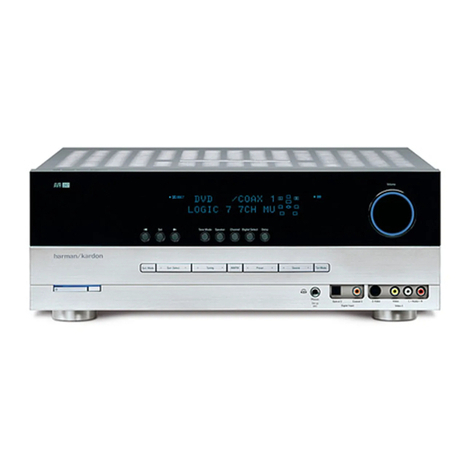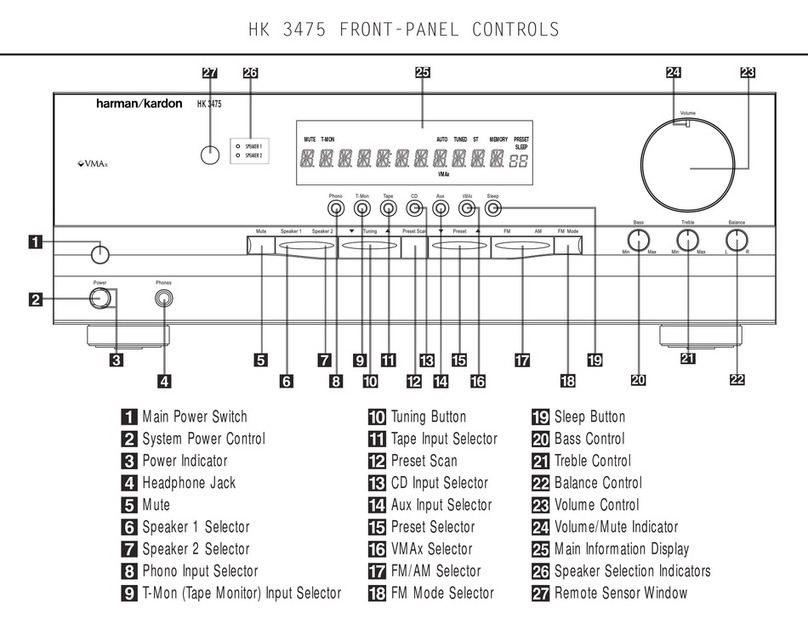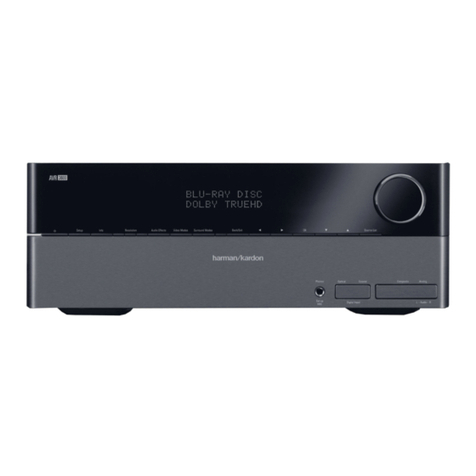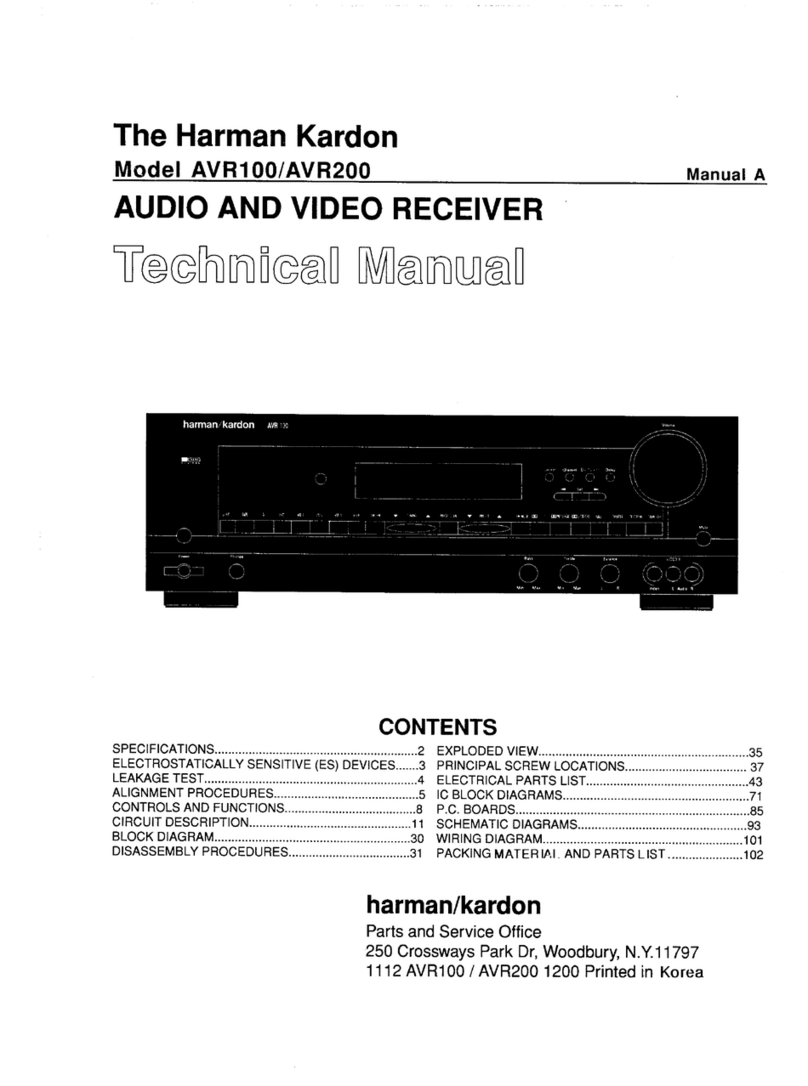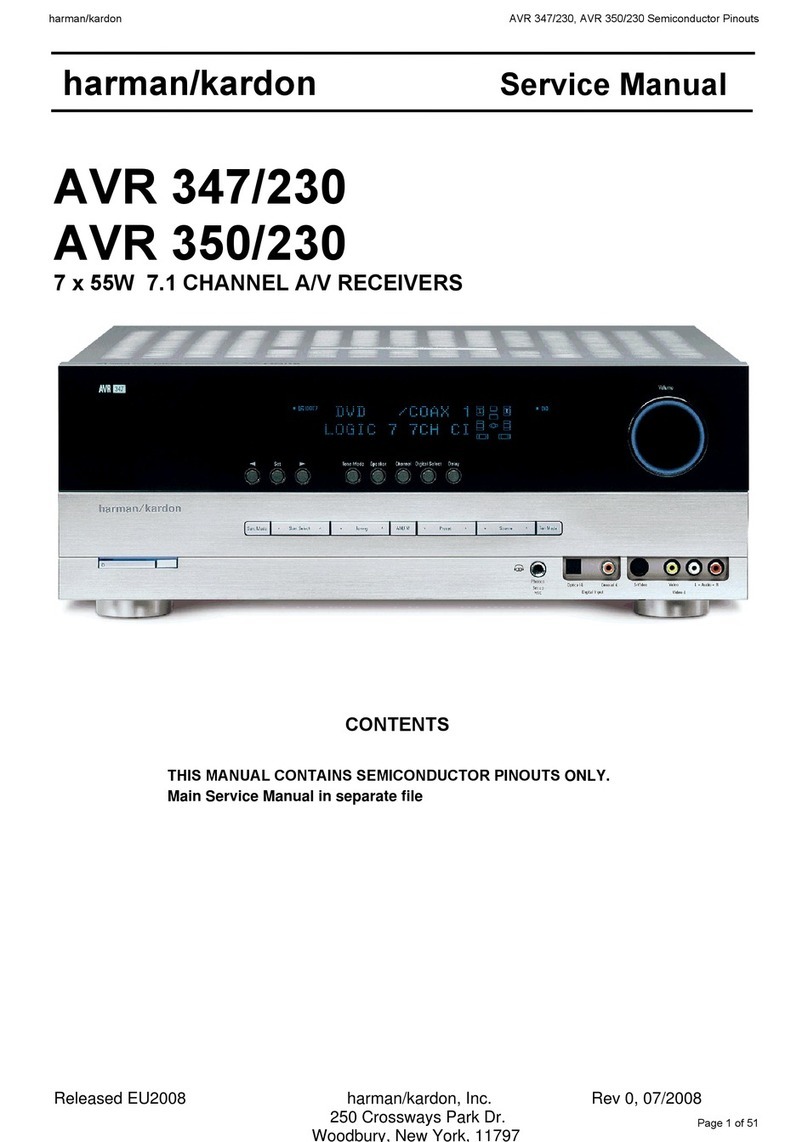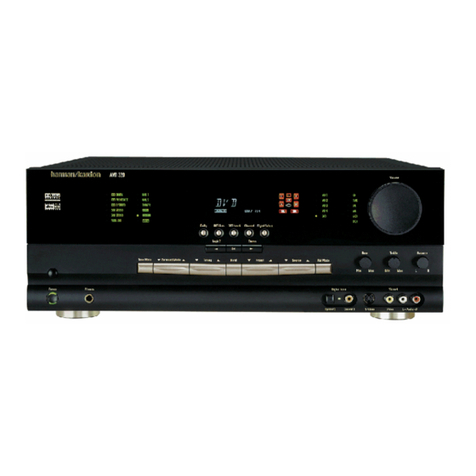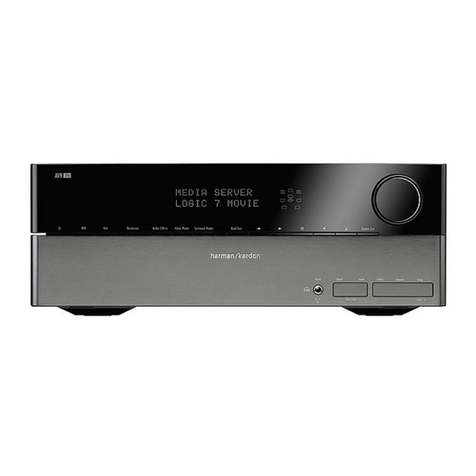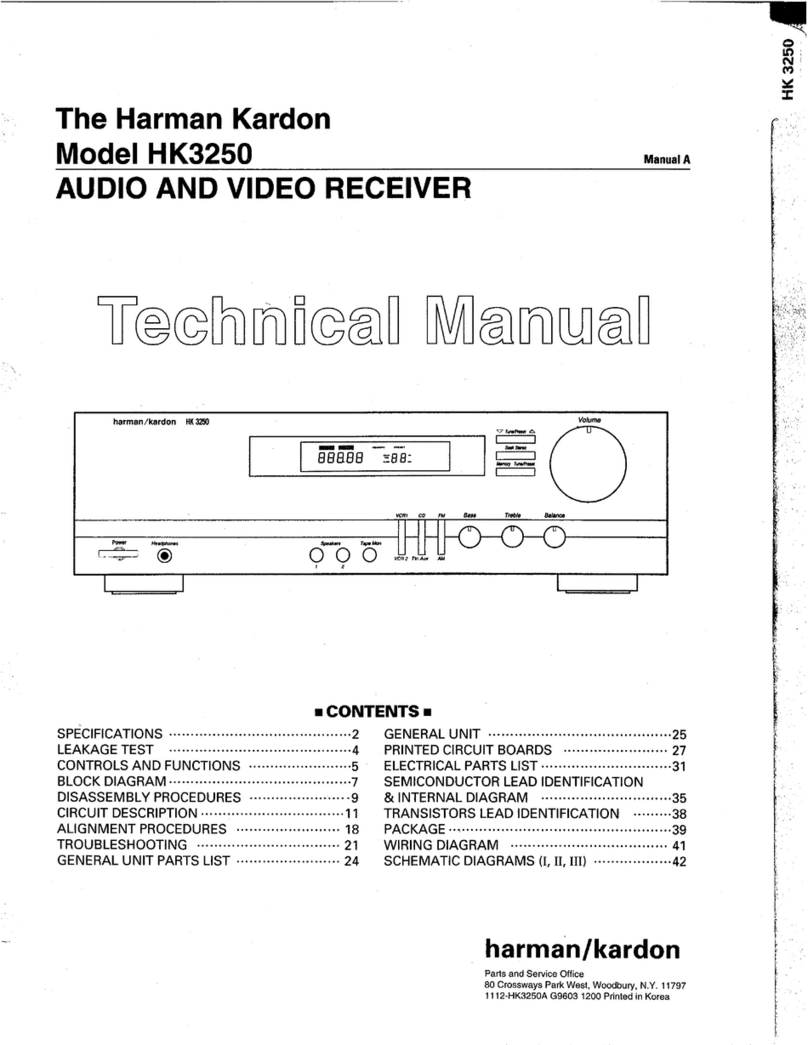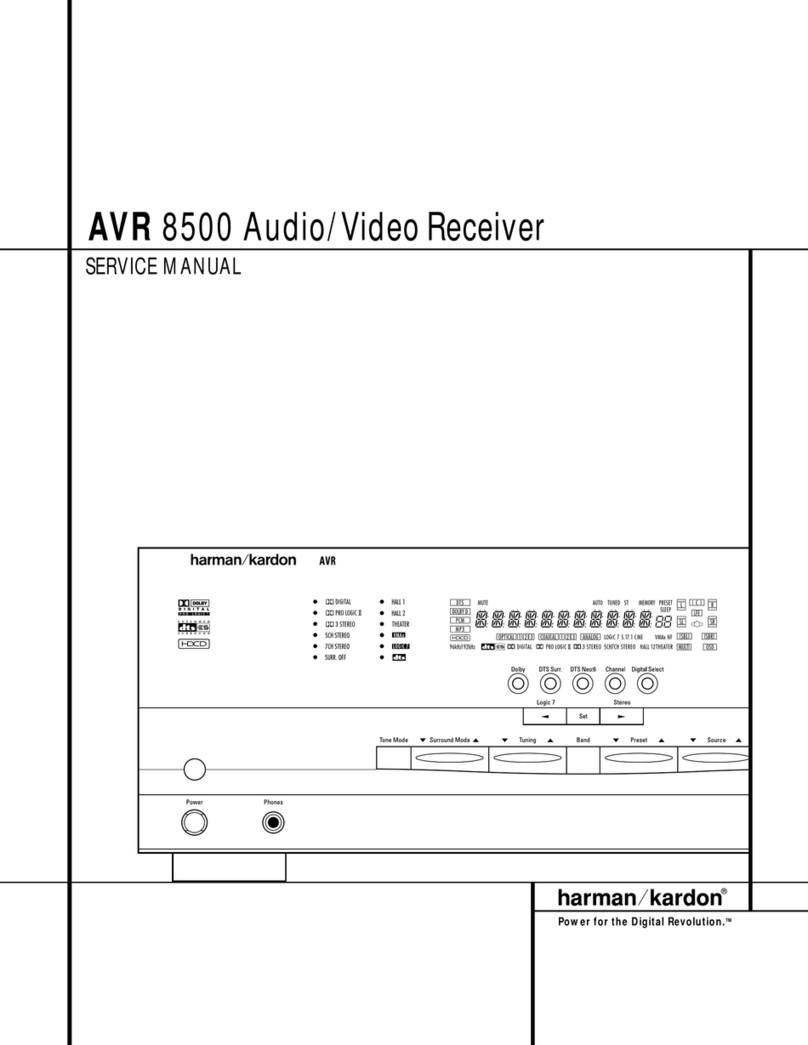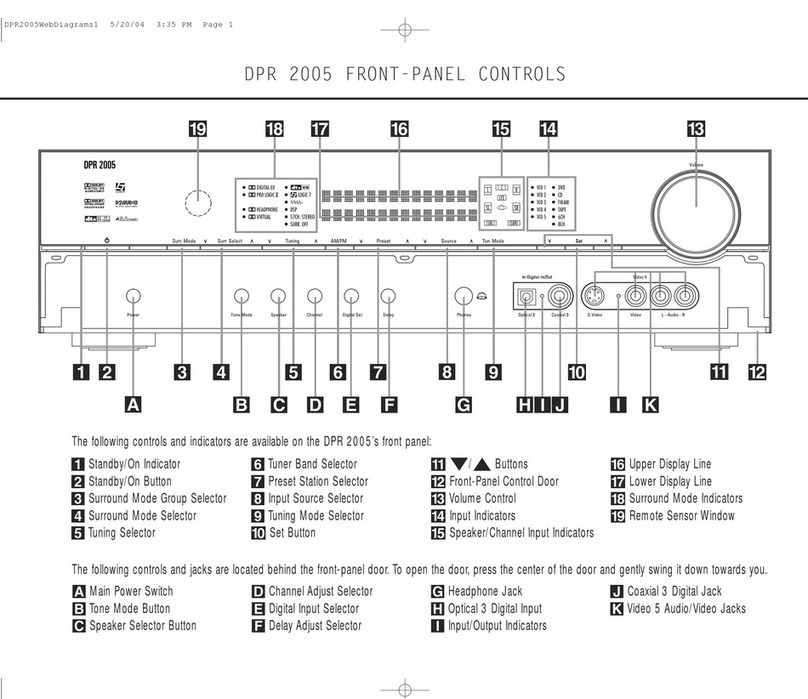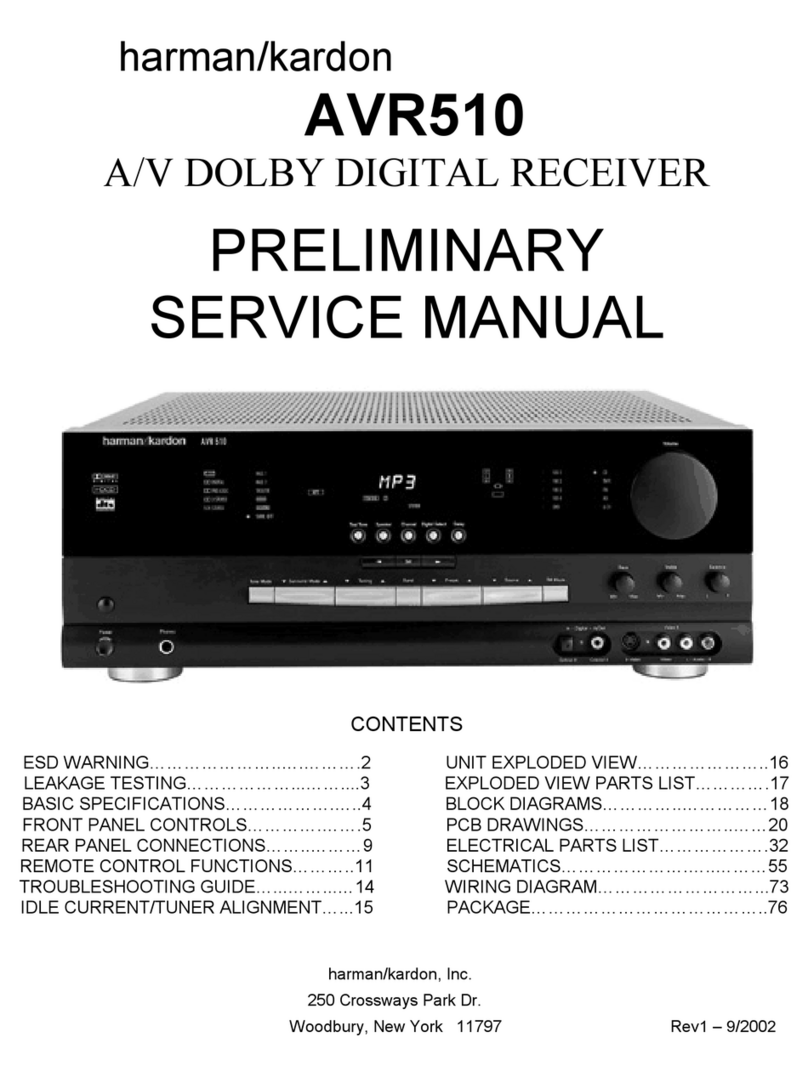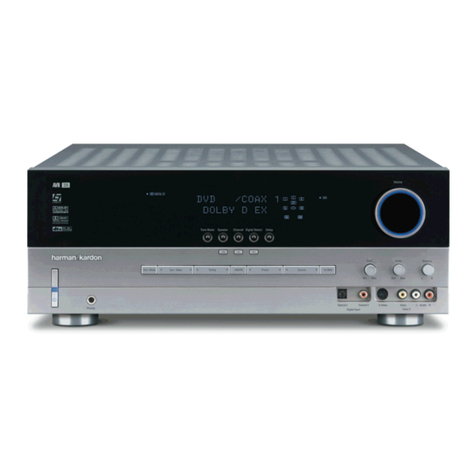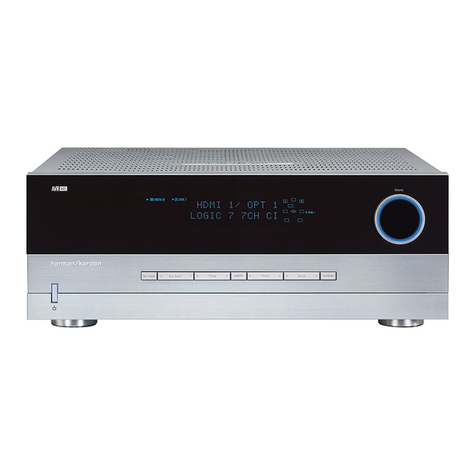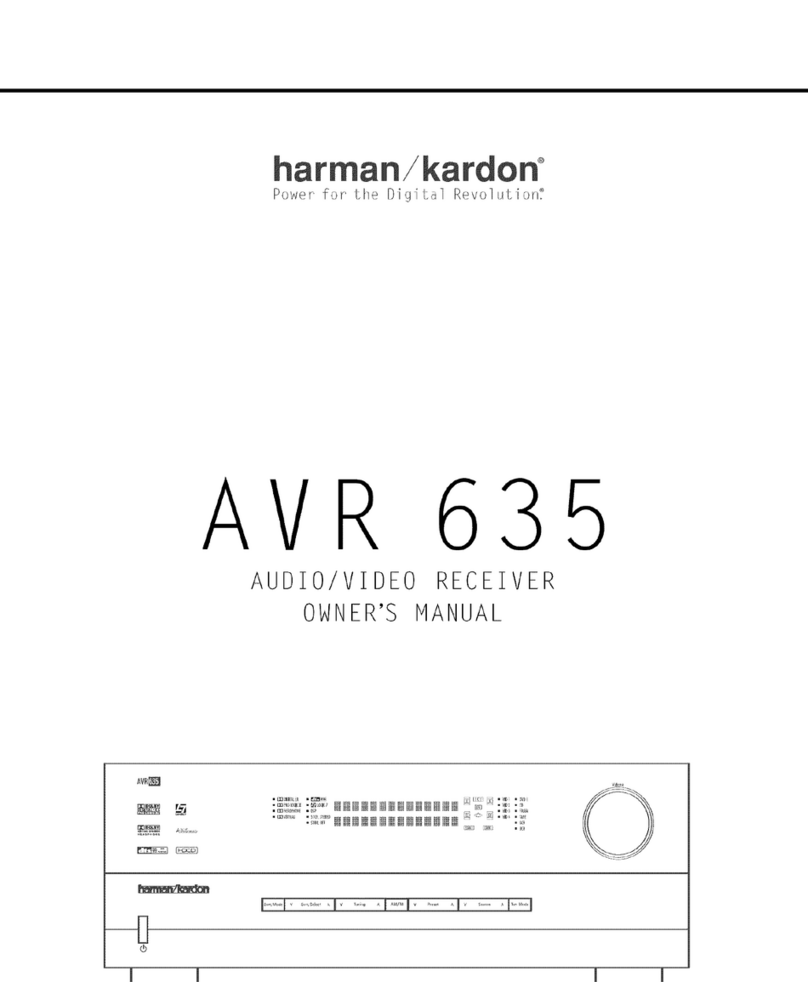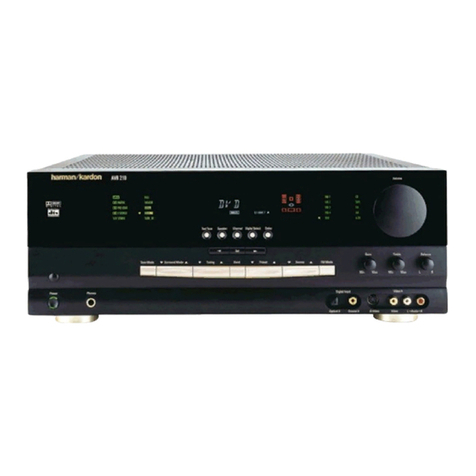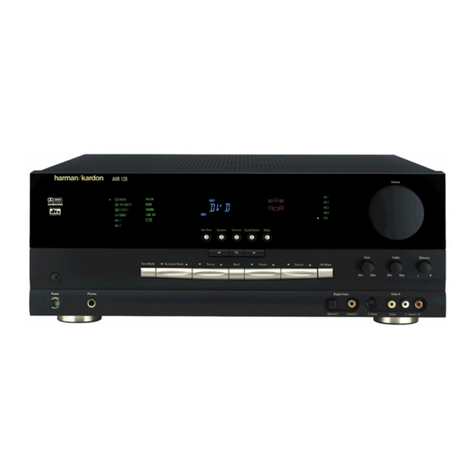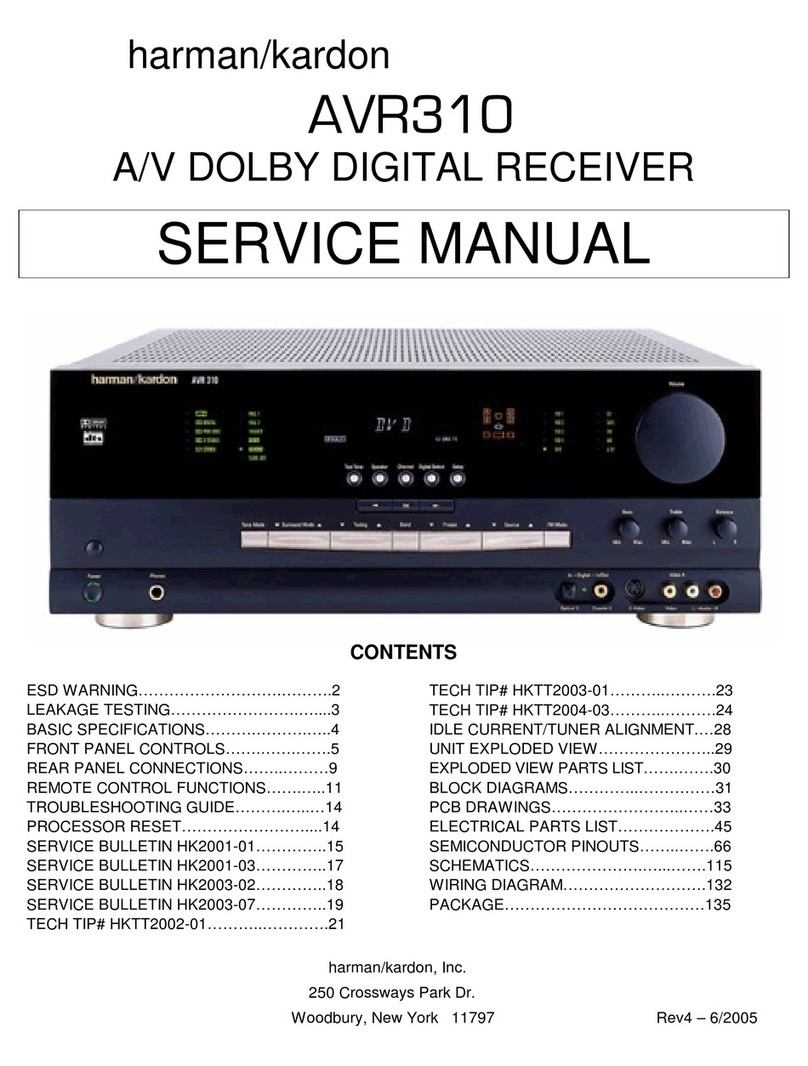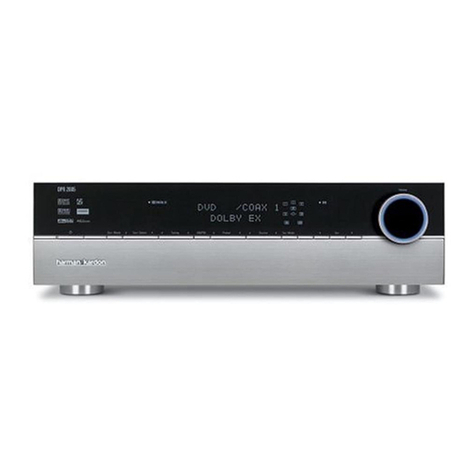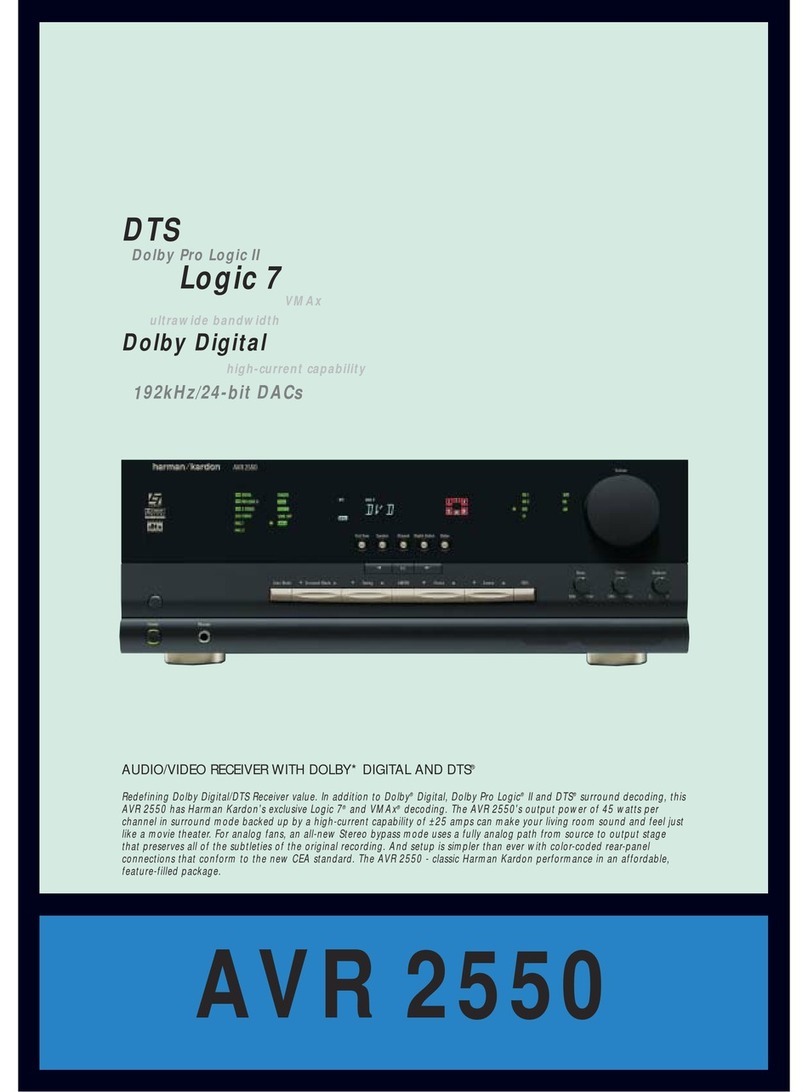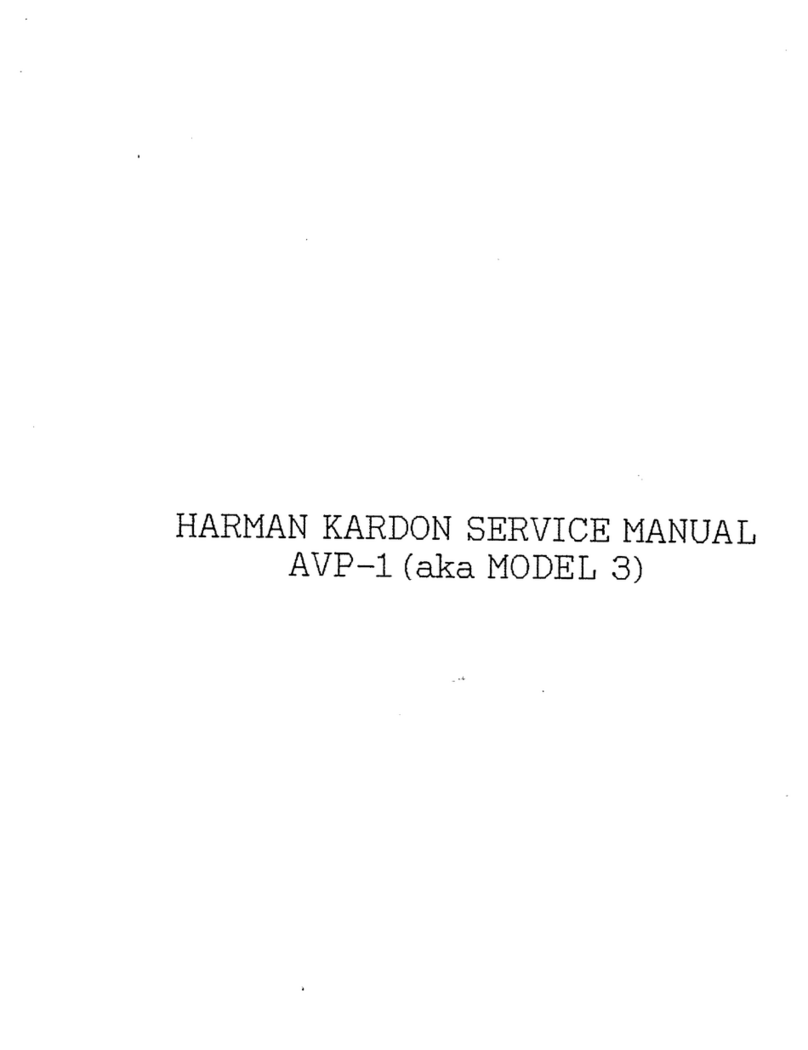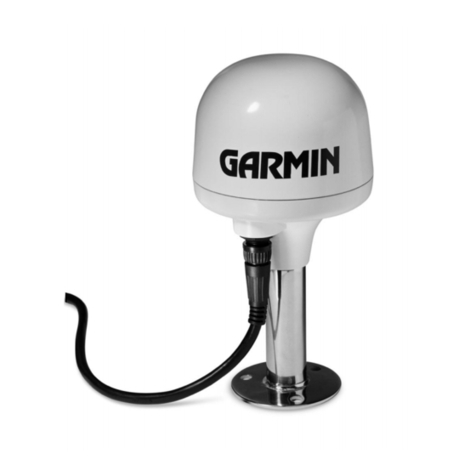61- and 73-minute marks when var-
ious demons attack Frodo. Peter
Jackson’s epic is a textbook exam-
ple of how to use rear effects; I
never felt that they were anything
less than appropriate.
In the opening scene of E.T.
(the 2002 version), for the most
part, the rear channels just pro-
vided a little more fullness to the
orchestra and main surround
effects. Only when the extrater-
restrial spaceship lifted off did
the Dolby EX track provide a dis-
cernible pan from front to side to
rear. For added hilarity, I played
the soundtrack in French.
The highlight of the Dolby
Digital 5.1 Diana Krall: Live in
Paris DVD was “Cry Me a River,”
with the velvet smoothness of the
jazz band and string orchestra
emerging against an inky back-
ground of absolute silence. No
trace of noise haloed Krall’s piano,
her voice, or the strings. Having
learned to respect the AVR 325’s
neutrality, I played through the per-
formances of Tchaikovsky’s first
and Rachmaninoff’s third piano
concertos in The Cliburn: Playing
on the Edge, also in Dolby Digital
5.1. The AVR 325 didn’t push the
dynamic envelope quite as far as my
reference piece, the Rotel RSX-106,
does; but then, the Rotel costs
more than twice as much (and
weighs an additional 5 pounds).
Of course, the majority of
music isn’t recorded in surround
but in stereo, and I logged quite a
few hours of two-channel listening
with this receiver simply because
it sounded so natural and allur-
ing. Richard Thompson’s new CD
The Old Kit Bag turned the old
master’s impassioned voice, elo-
quent guitar, and ace rhythm
section into a kaleidoscope of
textures that shifted with each
track. The recording was so good
that I hated to play it in any of the
surround-enhancement modes,
which made some of
the subtle, phasey
guitar notes sound
too prominent.
The toughest
test for any piece of
audio gear is the
human voice. We know what it’s
supposed to sound like, and we
instinctively react to the slightest
unintentional coloration. Seven
voices—two female and five
male—form the folk-singing
chorus of Blue Murder’s No One
Stands Alone, and the AVR 325
nailed them with just the right
balance between vocal separa-
tion and blending. Each voice’s
timbre, the earthy harmonies, and
the modest chiaroscuro of reverb
were in perfect proportion. This
album makes my heart run riot: I
can never listen to it without get-
ting sucker-punched into a blissful
emotional state. Thank God it’s a
stereo CD, not some weird multi-
channel mix that places each voice
in a different speaker. By the time
I got through it, I needed no more
convincing that the AVR 325 could
do no wrong with a well-recorded
piece of breathtaking music.
With the AVR 325, Harman/
Kardon has come up with a mod-
erately priced receiver for the
surround sophisticate. I wouldn’t
recommend it for a very large
room; and, for the home theater
buff who’s just getting started, the
learning curve may prove to be a
bit steep. If you take the trouble to
set it up right, though, it will pay
healthy dividends on an invest-
ment of well under $1,000.
* Mark Fleischmann is the author
of Practical Home Theater, now in
its second edition, available through
www.practicalhometheater.com
(or 800/839-8640).
Harman/Kardon AVR 325 A/V Receiver
GEAR GUIDE
58
Home Theater/
June 2003 •
www.hometheatermag.com
Harman/Kardon AVR 325 A/V Receiver
AVR 325 A/V Receiver $899
Harman/Kardon
(800) 422-8027
www.harmankardon.com
Dealer Locator Code HAR
0.0001
10
0.0002
0.0005
0.001
0.002
0.005
0.01
0.02
0.05
0.1
0.2
0.5
1
2
5
%
25 20050 75 100 125 150 175
W
HT Labs Measures: Harman/Kardon AVR 325 A/V Receiver
This graph shows that the AVR 325’s left channel, from CD input to
speaker output with two channels driving 8-ohm loads, reaches 0.1% dis-
tortion at 90.4 watts and 1% distortion at 107.2 watts. Into 4 ohms, the
amplifier reaches 0.1% distortion at 135.2 watts and 1% distortion at
156.9 watts. With five channels driving 8-ohm loads, the amplifier reaches
0.1% distortion at 73.8 watts and 1% distortion at 84.5 watts.
The analog frequency response measures –0.15 decibels at 20 hertz
and –0.09 dB at 20 kilohertz. Looking at a broader bandwidth, the
response measures –0.51 dB at 10 Hz and –0.49 dB at 50 kHz. In
modes that involve signal processing, the response is –0.45 dB at 10 Hz,
+0.16 dB at 20 Hz, –0.48 dB at 20 kHz, and –22.56 dB at 50 kHz.
Response from the multichannel input to the speaker output measures
–0.37 dB at 10 Hz, –0.11 dB at 20 Hz, –0.10 dB at 20 kHz, and –0.51 dB
at 50 kHz. THD+N from the amplifier was less than 0.012% at 1 kHz when
driving 2.83 volts into an 8-ohm load. Crosstalk at 1 kHz driving 2.83 volts
into an 8-ohm load was –84.89 dB left to right and –87.56 dB right to left.
The signal-to-noise ratio with 2.83 volts driving an 8-ohm load from 10 Hz
to 24 kHz with “A” weighting was –98.39 dBrA.
From the Dolby Digital input to the loudspeaker output, the left channel
measures –0.28 dB at 20 Hz and –0.30 dB at 20 kHz. The center channel
measures –0.24 dB at 20 Hz and –0.27 dB at 20 kHz, and the left sur-
round channel measures –0.23 dB at 20 Hz and –0.28 dB at 20 kHz. From
the Dolby Digital input to the line-level output, the LFE channel is +0.09 dB
at 20 Hz when referenced to the level at 40 Hz and reaches the upper 3-dB
down point at 82 Hz and the upper 6-dB down point at 102 Hz.
—AJ
Harman/Kardon AVR 325 A/V Receiver
